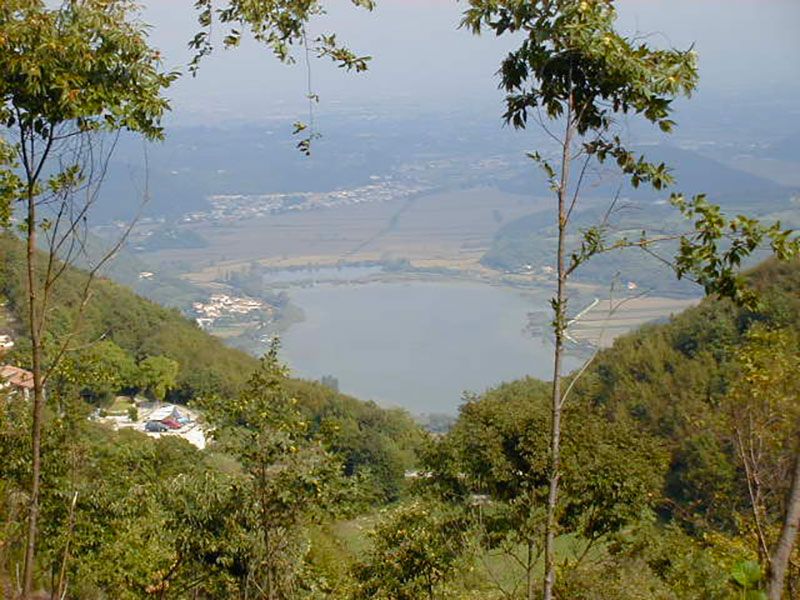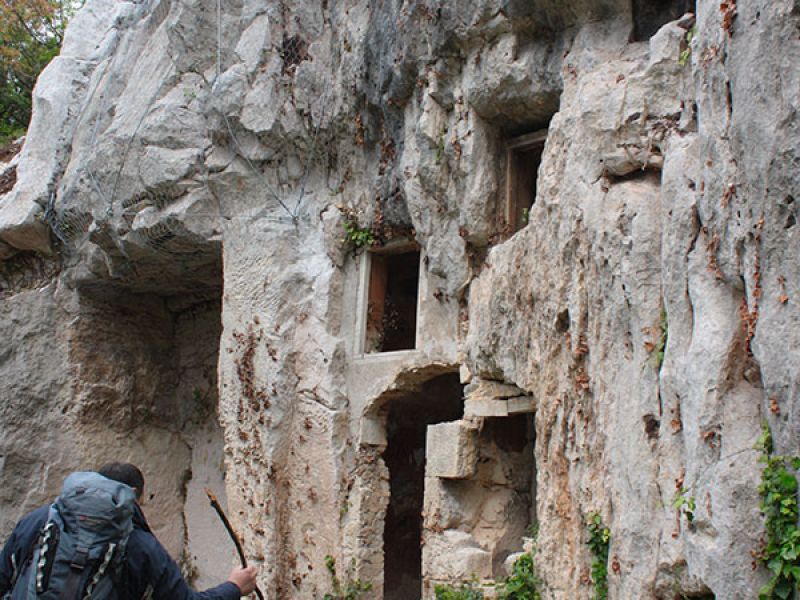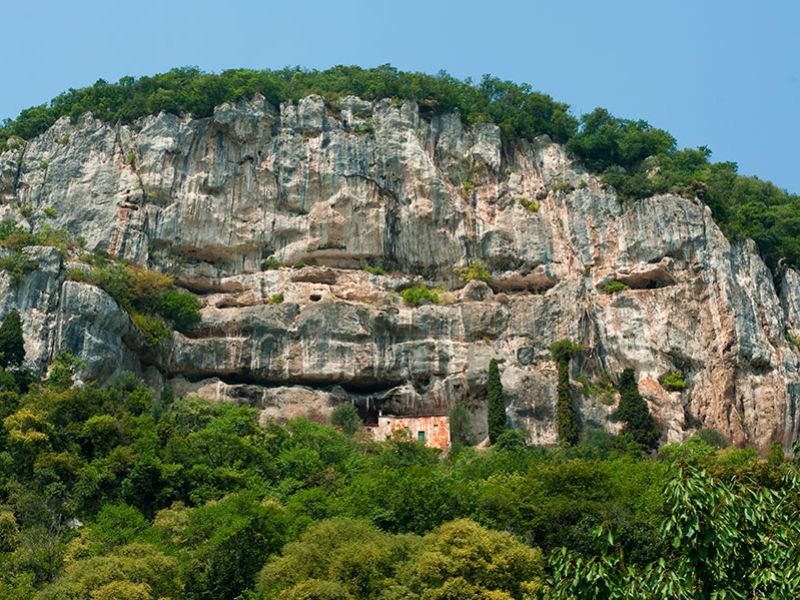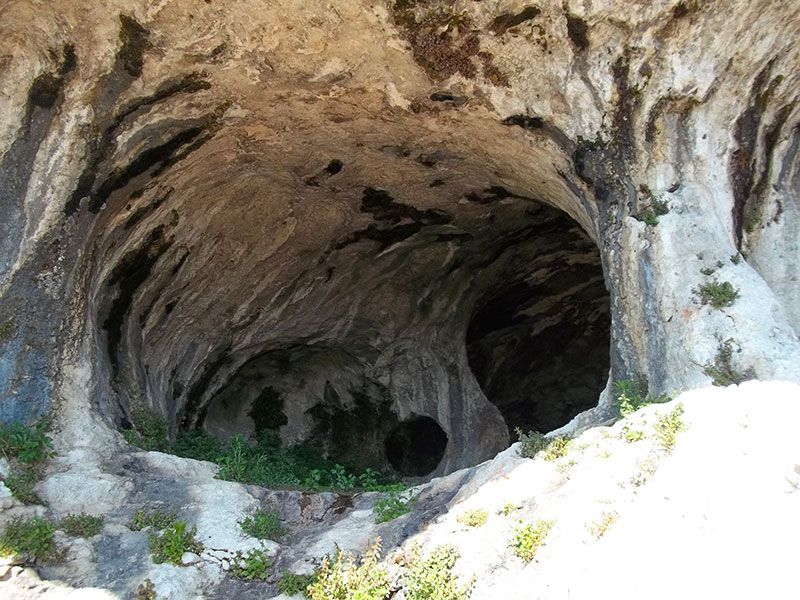Geology
The study of the rocks that build up the Berici Hills rise, and the discovery of abundant animal and vegetable fossils in them (shellfishes, sea-urchins, corals, seaweeds, etc.) testify to Berici Hills' underwater origin. The presence of different layers of rock is therefore the result of a slow and continuous process of sedimentation, and of accumulation of organic materials on the bottom of what, hundreds of millions of years ago, was a warm and highly populated tropical sea.
On the sea-bottom, never very deep, mud- and sand layers piled up until reaching considerable height, while the environment around them changed under the influence of the movements and stratchings the earth crust was subject to. Sea-life and plants were thriving and continuously varying, due to the extinction of some organisms and the appereance of new ones, while the sand and mud brought in by streams and watercourses that from nearby mainland flowed into this sea buried all that lied on the bottom.This mineral and organic material was to undergo complex chemical and physical processes that were eventually to turn it into rock.
The Berici Hills basin belonged to Tethys Ocean, and used to be at a much lower latitude that it is today, in what is today the tropic area, as we can deduce from the fossils of animals whose descedants can be now found living at the Equator. The most ancient rock formation that can be found on Berici Hills is High Cretaceous Red Chalk,about 9065 years old.
This rock, that tells us about a relatively deep sea, is characterized by very fine sedime ntary material and can easily be recognized from its red hue, greyish on top, and from the clearly detectable layers it is made of; a large number of fossils is usually found inside it.
After a temporary phase of partial emersion during High Eocene ( circa 55 million years ago ), sea-water covered up the whole region again in Middle Eocene (50-40 millions years ago), and sedimentation of clay-rich limestone materials ensued, that were to give origin to flaky, greyish-yellow rocks, with blurred and uneasy to detect layers.
This period of the geological story of Berici Hills, during which both underwater and subaereo volcanoes were active, lasted for a very long time, as the height of this rocks proves. The hills' slopes where Eocene rocks are present have many diverse looks: gentler where the clay is more abundant; very steep and almost vertical where the rocks are more compact, with no stratification and very little clay in them. Environmental conditions didn't change much during late Eocene (4036 millions years ago), but vulcanic activity did stop.
Towards the end of that age, dramatic climate changes occured, and Berici Hills landscape was completely transformed. Many of the fishes that had previously thrived, and whose bones and shells had been a massive component of the sedimentation material, became very rare or even disappeared, while new species became preponderant, bringing about important changes for Berici Hills sea-life. Colonies of seaweeds and corals proliferated in those warm, tranquil and highly-salted waters; their rapid and huge multiplication quickly originated a coral reef, positioned N-E/S-W, a few meters high above surrounding sea-bottom, that created a wide shelterd lagoon, with low and shallow waters.
The rests of that reef, akin to that of Castelgomberto, can nowadays be recognized in the steep cliff that goes from Lumignano to S.Donato di Villaga. The lagoon, on whose bottom a deposit of that soft dust-like material that would eventually become Berica stone was accumulating, communicated with the open sea through some breaches. This situation went on for most of the Oligocene period(36-24 millions years ago), during which eruptive activity started again.
At the end of Oligocene the whole area emerged from the sea, causing the death of the corals and the beginning of Karst phenomena on the solified rocks. During late Miocene the sea water covered up the region again, and the accumulation of sand continued, along with that of shellfishes, especially sea-urchins of the kind that can be found in S.Urbano as well.
The eventual and definitive emersion of Berici Hills from the sea (circa 6 millions of years ago) brought to an end the process of formation of the rocks. Pushed and elevated by the movements of the earth crust, the huge sea-bottom rises became hundreds-of-meter high hills, while the sea slowly receded from the Po Plane.
Once they got exposed to the open air, Berici Hills underwent many erosion phenomena, caused by rain, wind, and temperature changes. Weather agents opened wide the crumbly cavities and slopes making deep and huge valleys. These phenomena have not ended, and will continue until the complete erosion of Berici Hills.





